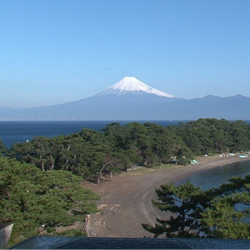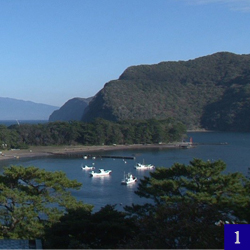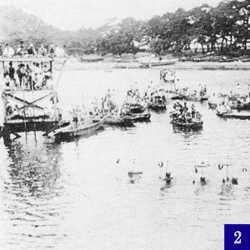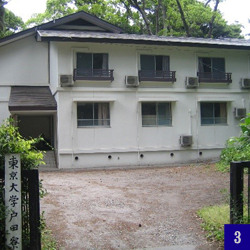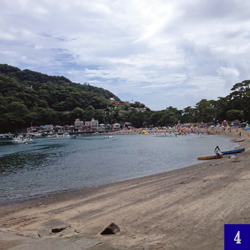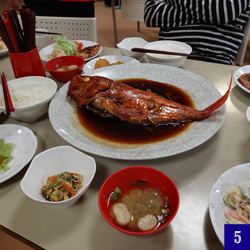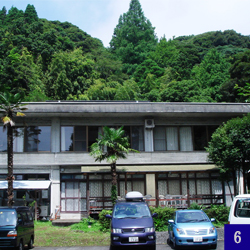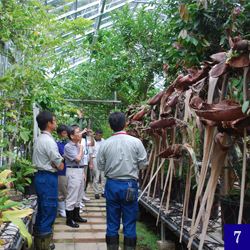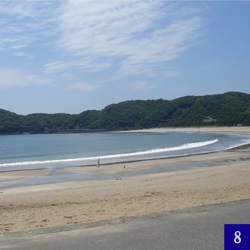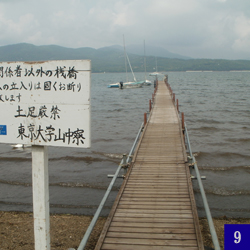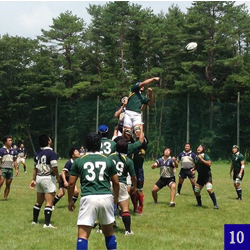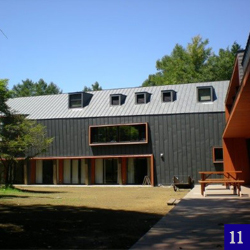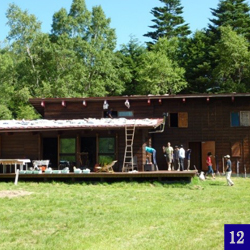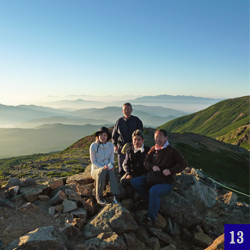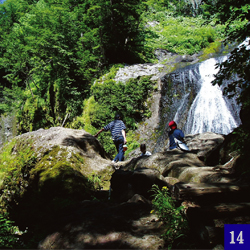Campus Walk
Sportia: Four Accommodations Dedicated to Promoting Healthy Lifestyles among the University Community
– Let's Take a Stroll along the Sea and through the Mountains –
The University of Tokyo provides its students, faculty, staff and alumni with facilities where they can learn as well as improve their physical and mental health. Among these facilities, there are four recreational buildings classified as health and athletic accommodations: two in Shizuoka Prefecture (Heda Dormitory and Shimokamo Dormitory), one in Yamanashi Prefecture (the Yamanaka-Naito Seminar House) and one in Nagano Prefecture (Norikura Dormitory). Because of the circumstances surrounding the history of the accommodations and their incorporation into the University, as well as their long traditions, these facilities are managed and operated by the University of Tokyo Athletic Foundation, a general incorporated foundation. In recent years, these accommodations have collectively come to be called “Sportia.” The membership of the Athletic Foundation is comprised of almost all undergraduate students and some graduate students, faculty, staff and alumni. Members enjoy the benefit of staying in Sportia facilities at extraordinarily low rates. I would like to take you around to explore these four accommodations in this edition of Campus Walk.
Let's head out. Taking a local train on the Tokaido Main Line or the Tokaido Shinkansen bullet train will bring us to Numazu Station in about two hours or about an hour, respectively. From the station, we can take a city bus (or just walk) to the Port of Numazu. From there, we take a high-speed ferry named White Marine, if it is in dock, and the open sea will soon unfurl before us. As if pushed forward by the majestic Mt. Fuji, the ferry will bring us to the former village of Heda before we know it (30 minutes). Heda, which is located in West Izu (the western part of the Izu Peninsula), is known for its natural harbor. Facing Suruga Bay and nestled in the middle of a pine grove along the sandspit called Mihama Cape sits our first destination, Sportia Heda. (Picture 1).
Approximately 120 years ago, in 1898, Tokyo Imperial University established a swimming area along the Cape, which is also known as Tomoe-no-umi (Tomoe Beach; the shape of the Cape resembles tomoe, a Japanese pattern). According to the historical annals chronicling Heda Dormitory's first eighty years (Heda-ryo Hachijunen-shi), this beach acted as the backdrop of some monumental Japanese “firsts.” Tomoe Beach is where Japan's first swimming competition took place, the Western form of swimming called the “front crawl” was introduced to the nation, and aquaplaning, a marine sport that was the predecessor to water skiing, was first practiced in Japan. The annual summer Swimming Competition (Picture 2) seems to have once been one of the major seasonal events in West Izu, counting a Crown Prince and a Minister of Education among its distinguished guests.
Let's return to Sportia Heda (Picture 3; accommodation capacity: 100). You will wake up to the gentle sound of waves lapping at the shore. Take a deep breath and inhale the fresh ocean breeze wafting through the pine grove. An enjoyable summer day is about to begin! You could choose to go for a swim at the beach right in front of the dormitory (Picture 4), enjoy fishing on the breakwater, or take a walk from the Heda Lighthouse just behind the dormitory towards the end of the Cape and back. If museums interest you, then you may want to visit the Shipbuilding Museum* and the Deep Sea Creature Museum, conveniently located next to the dormitory. After enjoying a dinner featuring freshly caught seafood (Picture 5), you may decide to go for an evening stroll. You will then enjoy a spectacular view of Mt. Fuji at sunset and later of a night sky full of stars reflected on Suruga Bay.
Let's step up the pace of our journey. From Heda, we can go south via the areas of Toi and Matsuzaki to the town of Minamiizu (Shimokamo Hot Springs) by bus. The Arboricultural Research Institute, an affiliate of the Graduate School of Agricultural and Life Sciences, has operated in Minamiizu since 1943. Sportia Shimokamo, our next destination, is affiliated with this Institute (Picture 6; accommodation capacity 40). While staying there, you can observe research conducted at the Institute about trees mainly from tropical and sub-tropical zones and also visit the greenhouse (Picture 7). Another pleasant highlight of this trip is relaxing in the fresh, free-flowing hot spring available at the dormitory. During the day, you can go swimming at Yumigahama Beach (Picture 8), which is just a bicycle's ride away. If you're willing to stretch your legs a bit, you will reach Cape Irozaki (famous for its lighthouse) at the southernmost end of the Izu Peninsula, where you can appreciate a fine view of the expansive ocean.
Perhaps you'd like to stay at a place in the mountains. From Shimokamo, we will first head for Gotemba. There are two routes to Gotemba from Shimokamo: going to Atami via Shimoda by train and crossing the Hakone Mountains by bus, or returning to Numazu by ferry and taking a train to Gotemba from Numazu Station. After arriving at Gotemba, Lake Yamanaka is only a short distance away. Among the Fuji Five Lakes, Lake Yamanaka is closest to Mt. Fuji and is located at an altitude of 980 meters. In this area, Tokyo Imperial University established a University Forest and constructed the Athletic Foundation's Yamanaka Dormitory in 1925. Tokyo Imperial University had been in search of land to use for a campus after the Great Kanto Earthquake in 1923, and the former village of Nakano (currently Yamanakako) of Yamanashi Prefecture had suffered damage from severe floods, so the village wanted help in preserving forested land it had received from the Emperor. The University and the village thus were able to reach an agreement, which resulted in the University building the dormitory and designating the gifted forest as a University Forest. Yamanaka Dormitory is located inside the University Forest (which is now known as the Fuji Iyashinomori Woodland Study Center) and on the shore of Lake Yamanaka. Near the dormitory, there is a pier exclusively for the UTokyo community (Picture 9) where yachts and boats can be used. The dormitory's sports field (Picture 10) is used for athletic practices, including training camps and similar events held by the University's Rugby Club and other sports clubs or by children's sports teams from outside the University. There is also a stable owned by the University's Equestrian Team, which is used in the summer instead of the regular stables due to the cooler weather in the mountains. The building formerly housing the dormitory, which was made of cypress wood from the University Forest and completed in 1929, was dismantled in 2007. Thanks to a donation from Mr. Susumu Naito, a UTokyo alumnus, the dormitory was reborn in 2009 as the Sportia Yamanaka-Naito Seminar House (Picture 11; accommodation capacity: approx. 100). The Sportia Yamanaka-Naito Seminar House is equipped with facilities that enable the University of Tokyo and the Fuji Iyashinomori Woodland Study Center to conduct research activities and hold educational seminars, allowing the accommodation to be actively used throughout the year. Sportia Yamanaka is also accessible by express bus from Tokyo. It takes about two hours from the Expressway Bus Terminal in Shinjuku to reach the bus stop Yamanakako-Mura Yakuba-mae, which is a five-minute walk from Sportia Yamanaka.
To finish off our excursion, let's visit Sportia Norikura (Picture 12). Sportia Norikura is located at the highest altitude of the four accommodation facilities, nestled into the side of Mt. Norikura at a height of 1,700 meters. Equipped with a power generator and a water supply system which draws water from a mountain stream, Sportia Norikura is a small lodge with an accommodation capacity of up to 15 people. When you want to go climbing, just take a bus to Tatamidaira. If you are a good walker and the weather is good, you can reach Mt. Kengamine (Picture 13), one of the peaks of Mt. Norikura, in 90 minutes. Sportia Norikura is surrounded by verdant woodlands, a grand blue sky, numerous notable waterfalls (Picture 14) and a sky full of stars at night. Located in the middle of this vast natural landscape, Sportia Norikura is an ideal recreational facility.
How did you like our rather fast-paced tour? As long as you are a member of the University community or have someone in your group who is a member of the Athletic Foundation, you can use these Sportia facilities. For details, please visit the website of the Athletic Foundation of the University of Tokyo. Reservations may be made at one of the Athletic Foundation's contact offices or by mail. We look forward to welcoming you to Sportia!
* A Russian frigate sank during the 1854 Tokai earthquake, and Russian sailors and Japanese carpenters came together to construct a new ship at Heda to help the Russians to return home. The ship, named Heda after the place where it was built, was the first Western-style ship constructed in Japan. As a location demonstrating the friendship between Russia and Japan, Heda is a historical place that contributed to the opening of Japan to the world.
1. Sportia Heda's location gives you a fantastic view of Mt. Fuji and Suruga Bay!
2. A picture of the Swimming Competition that took place in 1933.
3. Sportia Heda is a two-story building with a total of 29 rooms.
4. You can go swimming or boating in Japanese-style boats at Mihama Beach, which is right in front of the dormitory
5. A delicious dish of locally-caught kinmedai (red seabream) simmered in soy sauce!
6. Sportia Shimokamo features a tennis court where you can also play futsal.
7. President Hamada visited the Arboricultural Research Institute in August 2011.
8. In the summer, a transportation service is available between Sportia Shimokamo and Yumigahama Beach.
9. The pier is constructed and dismantled by students from the Athletic Foundation every year.
10. This field with natural grass turf is ideal for playing rugby and soccer.
11. The Yamanaka-Naito Seminar House, the newest of the four accommodation facilities.
12. With no TVs, nights at Sportia Norikura are spent enjoying the starry sky and singing songs.
13. Climbing to the summit of Mt. Fujimi (a peak of Mt. Norikura) to watch the sun rise.
14. Sanbondaki Falls, one of the Three Famous Falls of Mt. Norikura.

Kohji Kishio
Director, the Athletic Foundation of the University of Tokyo (also Professor at the Graduate School of Engineering) http://www.undou-kai.com/page/about.html




